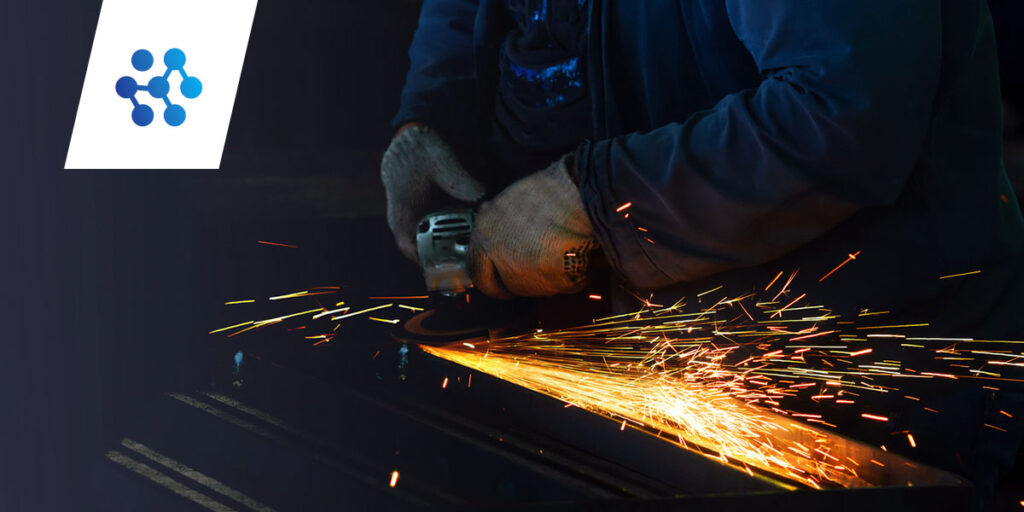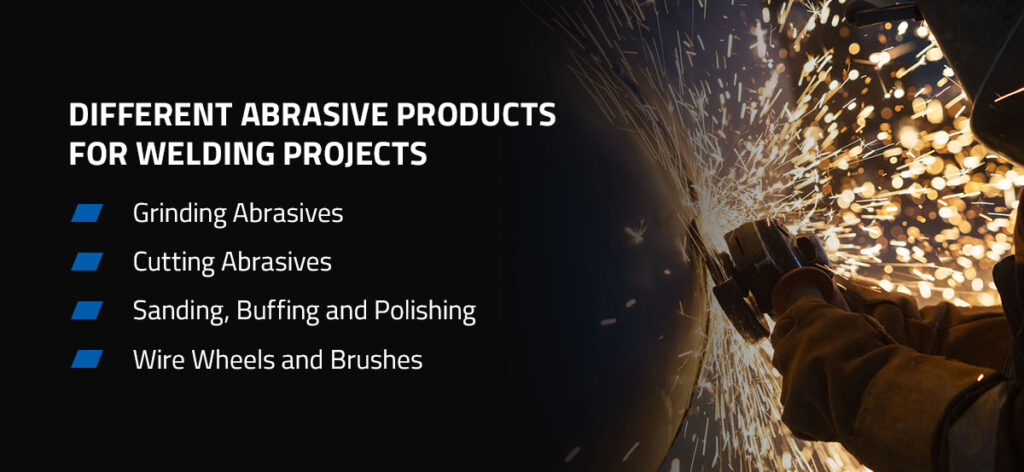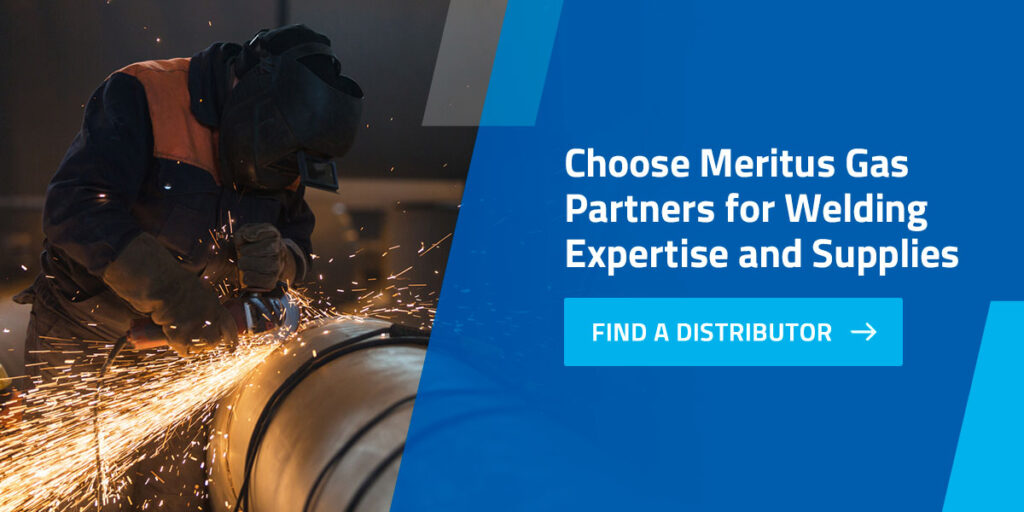

The welding abrasive you choose can have a major impact on the success of your welding job. Various types of abrasives are available, though they’re not equally well-suited to every welding project. This article will explain the importance of abrasives and help you make the right choices for a high-quality, efficient weld.
An abrasive is a tough, grainy material used to smooth out or shape a metal surface when welding. It’s essential for preparing and finishing pristine welds and is also effective for repairing errors. Specifically, abrasives have several beneficial functions, including:
In general, you should choose an abrasive that’s harder than the metal you’re applying it to. While softer abrasives work well with softer metals or gentler applications like polishing, harder abrasives can handle heavy-duty metals and applications that require more force.
Some of the most common abrasive materials for welding projects include:

The different abrasive materials are formed into abrasive products, which are then applied to welding surfaces by abrasive tools. Each type of abrasive product has a distinct advantage, depending on your welding project.
The most common abrasive grinding products include depressed center grinding wheels for weld grinding and see-through fiber discs for weld blending. Thanks to their versatility, grinding abrasive tools can be used to achieve precision across many welding tasks.
These abrasive products include chop saw wheels and cut-off discs and are effective for cutting through various metals. For example, welders can use cutting abrasives for stock removal. While cutting discs are common cutting abrasives, some other welding tools are capable of cutting, such as grinding discs design for both grinding and cutting.
These abrasive products remove imperfections such as burrs from the welding surface and can create a smooth, shiny finish when needed. Some examples include coated abrasive flap discs for deburring, sanding discs for smoothing, and non-woven surface-finishing discs for polishing.
For cleaning surfaces before a weld and removing imperfections during the project, wire wheels and brushes are the appropriate abrasive products. While wire wheels are compatible with power tools for efficiency, heavy-duty abrasive brushes are manually applied to clean hard-to-reach areas.
Knowing the proper abrasive grit size helps you achieve a proper weld — “grit” describes how fine or coarse the abrasive particles are and is measured in numbered sizes. As lower grit size indicates a coarser abrasive grit, higher numbers mean a finer grit. For example, a 24 grit is much coarser than an exceptionally fine 320 grit.
It’s possible to have two abrasive products of the same type made from the same material to have both a coarser grit and a finer grit. Therefore, grit is another factor to consider alongside abrasive materials and products. Based on your application, one grit size may be more favorable than another:
Now that you understand the role of abrasives in welding along with the essentials of materials, abrasive products and grit sizes, you’re ready to choose your abrasives. Remember that you may need different abrasives for different tasks during a welding project.
Here are six steps to follow when choosing the right abrasives for welding projects:
If you have questions about finding and choosing the right abrasives for welding projects, contact one of our welding experts at Meritus Gas Partners.

Are you looking for a reliable, local source for all the welding supplies you need, including abrasives? Meritus Gas Partners is a nationwide network of industry-leading welding gas and supplies distributors. Our independently run partners offer the care, attention and exceptional personalized service of a local small-to-midsize business, plus the resources of a national network.
Find our distributors in your area for the selection of quality abrasives and the industry expertise you need.